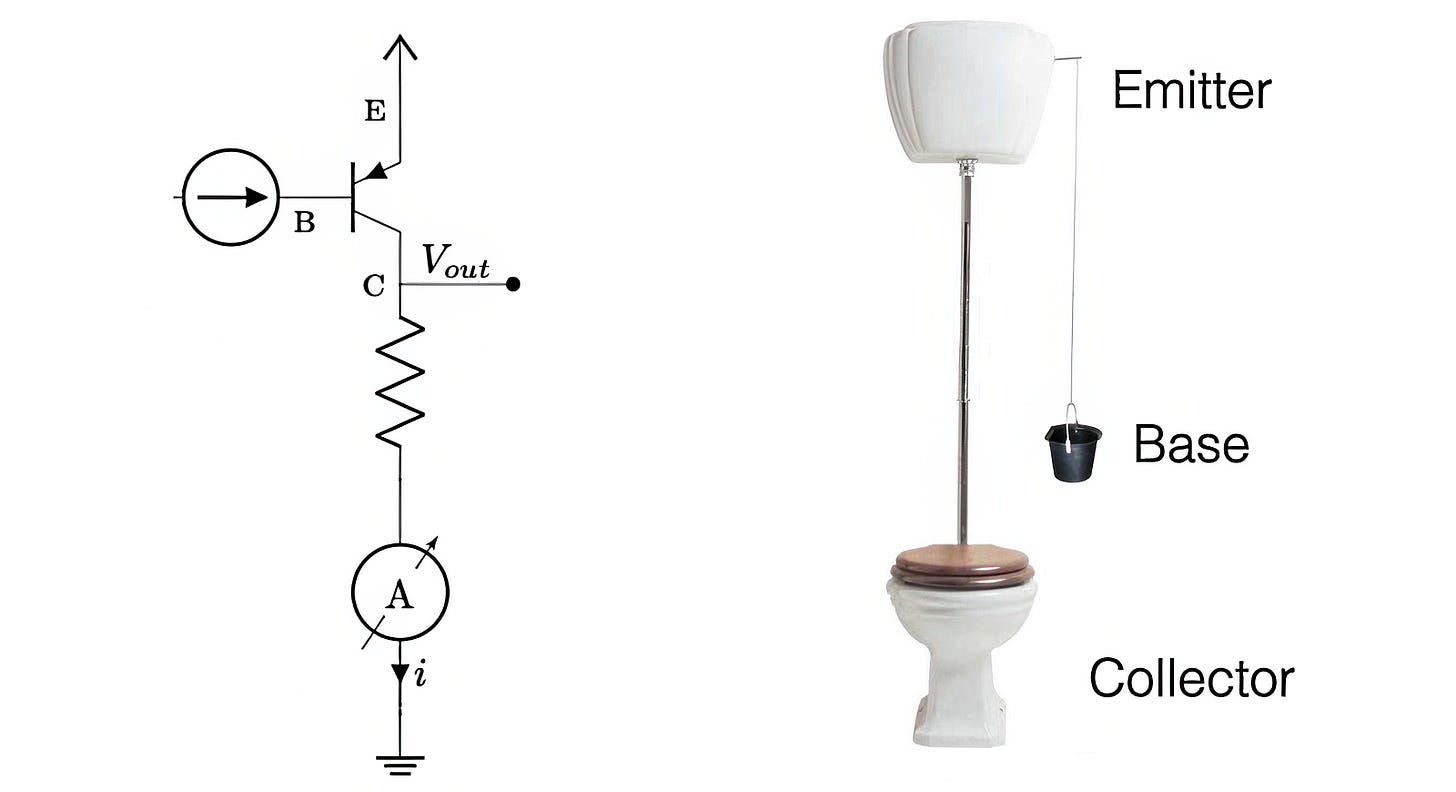Against the hydraulic analogy
Let that sink in: the most popular tool for teaching electronics makes the trade harder to learn.
If you ever picked up an introductory book about electronics, you were probably exposed to a teaching aid known as the hydraulic analogy. It is a reimagining of electronic circuits as a series of tubes; in this model, electricity is akin to water, batteries are pumps, and switches behave like valves.
I learned the basics the same way, but I’ve come to profoundly dislike this approach. I think it held me back for years. To be clear, analogies and simplifications are useful — but they need to hold water, requiring only incremental tweaks as you progress. And from this perspective, the hydraulic analogy springs far too many leaks. It’s also relied on for too long, in part because we haven’t poured nearly as much effort and creativity into the next step.
The hydraulic model is iffy even for inductors and capacitors, but the issues become hard to ignore by the time you’re discussing semiconductors. The components are central to all modern electronics, but there’s no plausible plumber analogy for how they behave. One book tries to explain a junction field-effect transistor (JFET) the following way:
Well, hold on to your wrench: in a typical JFET, aren’t the source and drain terminals supposed to be interchangeable? And don’t these transistors allow some gate current to flow when the voltage becomes slightly positive?…
Wikipedia doesn’t stop there; although thankfully not featured in the main page for metal-oxide-semiconductor field-effect transistors (MOSFET), the following model is used on the site:

Mother of all manifolds! How do these models account for the “flow-to-pressure” (Id to Vds) curve of their namesake electronic components? Well… they don’t. In other words, if you’ve gotten this far using hydraulics, good luck making sense of amplifiers.
It gets worse; presented without comment is a well-publicized reinvention of a bipolar junction transistor (BJT) as a pull-chain toilet with a bucket instead of a handle:
The problem with these models isn’t that they aren’t intuitive: it’s that the analogy is fundamentally incorrect and can’t be fixed by tacking improbable plumbing fixtures on top. Worse, when the illusion falls apart, you can’t just backtrack a bit or add a footnote here and there; the only path forward is to flush it all down and start anew.
👉 For other articles on electronics, click here. For a collection of pipe-free articles on electronics, click here. You might enjoy an explanation of currents, voltages, and impedances; a discussion of transistors; a primer on signal amplification; or a deep dive into op-amp dynamics.






But I was so proud of my inductor as paddlewheel analogy....
Also, the plumbing analogy is not even that helpful since I am not a plumber! Why the indirection???